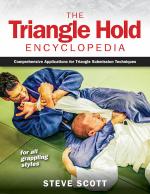I don’t speak Japanese. However, I do “speak Judo.” Like millions of other judo exponents worldwide, I use Japanese terminology and phrases when discussing judo techniques with other people.
When Jigoro Kano was developing his new invention, Kodokan Judo, one of the most important things he did was to reorganize the jujutsu techniques of the older schools of martial arts and rename these techniques. This was an important step in what would eventually become a worldwide movement. This common language of terminology and phrases would not only help launch judo to become an international sport, martial art and educational activity, but it would be used to clarify and explain the many technical aspects of judo.
Japanese is the international language of judo. Every discipline, field of study or activity has its own nomenclature or language. I was once coaching at a training camp in Sweden and I didn’t speak Swedish, but I did speak judo. When I said “Tai Otoshi” everyone on the mat knew what to expect and we all connected. Latin is used in the legal and medical professions; English is used by airline pilots. If an established language is not used, then the people doing the activity invent their own language. Baseball has the “home run,” American football has the “touchdown.” Chess has “checkmate.”
To expand on what was briefly mentioned earlier, when Jigoro Kano invented judo, he renamed many jujutsu techniques, stripping most of them from their flowery or colloquial names (some names survive such as Tani Otoshi and Yama Arashi, but for the most part this isn’t the case). In the place of these colloquial names, he named the various principles, movement and techniques of judo with more descriptive names. These descriptive names and terminology establish a baseline of cognitive thought that lends itself to teaching biomechanically sound skills and movement. It also lends itself to innovative thought and action. There has to be a foundation of nomenclature that is accepted by everyone in the activity or discipline if there can be any future innovation or development of that activity or discipline. If we all want to be on the same page on any subject, we first must know how to read what’s on that page.
Better Understanding of Judo
By learning and knowing the names of the principles/concepts, movement, and techniques of judo, we have a better understanding and appreciation on why, how and when these things work. Here’s an example. In judo, one of the most versatile and popular throwing techniques is Seoi Nage. There’s a reason why Seoi Nage is called what it is. The name “Seoi Nage” translates to “Back Carry Throw.” When applying Seoi Nage, the person doing the technique (the “tori”) lifts his opponent (the “uke”) up and carries uke across and over his back. This describes the throwing action of what takes place. Tori doesn’t lift and carry uke over his hip or his foot, he lifts and carries uke over his back. Contrast that to another popular throwing technique, Ogoshi. “Ogoshi” translates to “Major or Big Hip.” This tells us that tori pulls uke onto his hip in a major (or big) pulling action and throws uke over his hip. The axis of the throwing action is the hip and tori’s emphasis is pulling uke onto his hip, which is the hinge or axis of the action.
Let’s get further into the weeds for the sake of more explanation and explore this and compere two hip throws that look similar but aren’t. Ogoshi is different from another popular throwing technique, Uki Goshi. To an untrained eye, these two throws like alike but they are different. Uki Goshi translates to “Floating or Straddling Hip.” This tells us that tori breaks uke’s balance, and at the last split-second, places his hip in front of uke so that uke straddles or “floats” over tori’s hip. Tori doesn’t pull uke onto his hip, but rather he moves in such a way that uke floats over it. To some, that may be “splitting hairs” but from the necessary standpoint of explaining human movement, it’s important. When Jigoro Kano went about renaming technical skills, he approached the subject in the same way every other scientist or educator would do. So, by learning and knowing the names of the principles, concepts, movements and techniques of judo, we have a better understanding and appreciation on why, how and when these things work. There’s a reason why Seoi Nage is called what it is. If you learn what Seoi Nage means, you will then be better able to understand how it works and how to make it work best for you.
Value of a Name
Here’s another reason why judo, like every other method of education, has a common language. When we human beings place a value on something, we give it a name. For example, you don’t call your children “Child One” or “Child Two.” Each child has his or her own name. Names place a value on something. In every culture on this planet, names are important. By naming the movements, concepts and principles of judo, Jigoro Kano gave them value and permanence. These weren’t tricks or vague notions; they were valid movements of the human body and the principles that explained them. Something this important deserves a name.
The best way for students to learn Japanese terminology is for the sensei (“coach or teacher”) to use it on a regular basis in the same way a person learns any language. When teaching a technique, tell the students the English and Japanese name for it. Use the English name from time to time, but for the most part, use the Japanese name. And the coach should make sure that the term that is being used is the correct one. Again, it should be stressed that someone doesn’t have to speak Japanese to be skillful at judo, but that person’s skill, understanding and appreciation of judo will certainly increase if he or she can communicate with others in the commonly used and accepted use of Japanese terminology.
Coming back to the fact that Japanese names and phrases are the “international language of judo,” something else to remember is that if an instructor chooses not to use Japanese terminology and instead makes up his own terminology, and if a student moves out of the area and goes to another club, he is hindering that student’s future development. The odds are quite good that the new club where the student trains will use Japanese terminology.
Another strength in the language of Judo is that new names, phrases and terms evolve and come into use as innovations take place. The Kodokan Judo Institute in Tokyo, Japan is the source most people refer to on names of techniques or other terminology, but in recent years the Kodokan has given names to techniques that beforehand did not have an “official” name. Here’s an example. Several years ago, the Kodokan recognized the throwing technique called Obi Tori Gaeshi (Belt Grab Reverse Direction) as a different technique than what it is now. Formerly, this name was used for a specific throwing technique that was renamed Hikikomi Gaeshi (Pulling Reverse Direction). What is now named Obi Tori Gaeshi is a lifting throw that came from sambo made famous in the 1980s by Shota Kharbarelli and others. So, in the same way that other areas of science, education, sport and other aspects of life use their specific nomenclature, the language of Judo makes room for innovations and how to explain them. The best way to use Japanese terminology is to use it as a tool to identify and describe the different principles, movements and techniques of judo. As with any other field of study, those who are teaching should keep up with any additions, changes or modifications to the nomenclature used.
So, in closing, speaking Japanese is different than “speaking Judo.” But for those who want to have a better understanding and appreciation of judo, learning how to “speak Judo” opens up the whole world of judo to them.
The above is an original article by Steve Scott author of Winning Judo: Realistic and Practical Skills for Competitive Judo, Strategies that Win for all Grappling Styles, Publication Date June 2024, YMAA Publication Center, ISBN 9781594399848.





